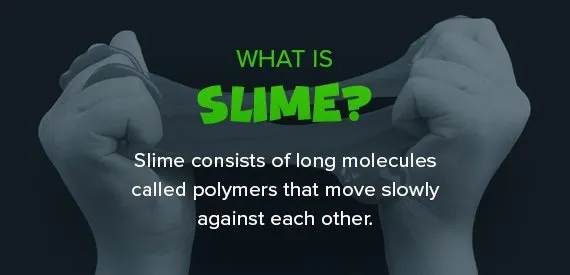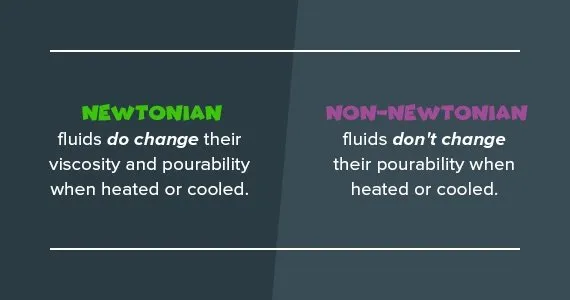Kids love slime, and you can help them make it while sneaking in a science lesson. You can even skip the pricey slime kits from the store.
Making slime for kids does not have to be expensive when you use ingredients from around your home. You’ll connect with your kids, engage their creative sides and teach them science. This combination of attributes means slime-making is the perfect activity for elementary school kids.
What Is Slime?
Slime consists of long molecules called polymers that move slowly against each other. Polymers make up the glue, but when you add a secondary ion mixture, the additional product links the polymers into a tighter network than before. The result is a slime that stretches, bounces and flattens in ways the ingredients could do on their own.
Materials You Need
To make slime, you need a glue mixture and a borax mixture. While the borax mixture has substitutes, borax tends to work best for the recipe. The amounts of alternative ingredients will vary. For best results, follow the recipe carefully the first time. However, encourage kids to experiment with what would happen if they change parts of the mixture.
1. Glue Mixture
To make the glue mixture, you will need equal parts glue and water. White, gel or clear school glue all work well to make slime — do not use paste or super glue. If you want to add color or glitter, opt for clear glue. You can find all types of glue at craft stores or office stores.
To save money on school glue for upcoming slime projects, stock up in the late summer when stores offer back-to-school supply sales. During the rest of the year, look for clearance deals, closeouts and coupons to save money. If you need a lot of glue for a major slime party, consider shopping in bulk at a warehouse store.
2. Borax Mixture
The borax mixture creates the bridges between the glue molecules. You will need a 12:1 ratio of water to borax, which converts to one tablespoon water to one-quarter teaspoon borax. A four percent solution of borax in water also works. This percentage equals one tablespoon borax per cup of water. Be careful when handling borax before mixing it into the slime. Some people have skin sensitivities that may flare if they touch borax.
Instead of borax, use liquid starch. You will need five ounces of glue to two tablespoons water to eight tablespoons liquid starch. This mixture will replace both the borax and glue mixtures. When mixing, add the starch two tablespoons at a time to the glue, stirring after each addition until the mixture reaches the desired consistency.
3. Extra Materials for Making Different Types of Slime
Depending on if you want to add other ingredients to your slime, you can incorporate extras into the recipe. Use any of the following to change the recipe for a more colorful or creative slime:
- Glow-in-the-Dark Paint: Adding glow in the dark paint — you need no more than a six-ounce bottle for 100 portions of slime — makes the slime glow in the dark.
- Food Coloring: The most basic way to add color to slime requires adding a few drops of food coloring to the glue mixture.
- Fluorescent Markers: Soak the fabric part of a fluorescent marker in water until it changes color. Replace the water in the recipe with this colored water for the slime to glow when you shine a black light on it.
4. Other Supplies
Keep things neat while having fun. Have these supplies on hand to make the slime creation and cleanup faster and more enjoyable both during the process and after the fun is over.
- Disposable Paper Cups: Give each kid a paper cup to mix their serving of slime in.
- Craft Sticks: Wooden craft sticks are better than spoons for mixing because the square shape will make it easier for the kids to pull the finished slime off the stick. Also, these sticks are disposable, reducing the cleanup you must do after the experiment.
- Newspaper or Other Covering: Cover the work area with newspapers or plastic sheeting to protect the surface.
- Gloves: If kids have skin allergies, offer hypoallergenic gloves for them to use when kneading the slime.
- Resealable Plastic Sandwich Bags: Keep the slime from drying out by storing it in sealed sandwich bags.
How to Make Slime
While making slime requires a handful of steps, this guide to slime includes numerous variations. These added parts of the process depend on whether you want to add extras to your product. In general, you’ll follow these four steps:
- Prepare the Glue: Combine the parts of the glue mixture together. Add a few drops of glow-in-the-dark paint to the glue mixture if you want the product to glow.
- Mix the Borax: Mix up the borax solution.
- Combine the Ingredients: Slowly mix the borax a few drops at a time into the glue mixture while stirring. If you want food coloring, add it between drops of borax solution. Stop incorporating the borax when most of the mixture adheres to the stirrer. To make cleanup easier, use wooden craft sticks to stir.
- Knead the Slime: Remove the slime from the stick and knead it thoroughly until it loses its stickiness.
Once you’ve finished making the slime, it’s time to have some fun with your experiment.
Have Fun With Your Slime
While this DIY slime guide mentions how to make standard slime, you can take that idea to the next level. These variations are great slime ideas for kids that you can use whenever you want an educational, creative activity:
- Fuzzy Slime: Turn your slime into a fuzzy creature by mixing in hair from a pet.
- Glitter Slime: Mix watercolors with the glue instead of water and add glitter to the slime when you mix in the borax. You’ll have a shimmery substance that’s as fun to play with as it is to look at.
- Glow-in-the-Dark Slime: Adding glow-in-the-dark paint makes the slime shine when you turn out the lights.
- Fluorescent Slime: Under a blacklight, fluorescent slime glows when you turn off all other lights.
Science Behind the Slime: Newtonian vs. Non-Newtonian Fluid
Slime comes from the chemistry of the bonds created when you mix the ingredients. The physical structure of the glue changes with the addition of the borax, making it stretchy and durable. With the combination of household ingredients, you can turn a Newtonian fluid into a non-Newtonian one.
Isaac Newton — yes, the gravity guy under the apple tree — did more than create the gravity formula. He also brought to science the description of fluids and how their pourability reacts to temperature changes. Newtonian fluids only change viscosity and pourability from temperature shifts, while non-Newtonian fluids change from other influences.
Fluids are things that flow. Those that flow like water and change in viscosity compared to temperature are Newtonian fluids. When you think of fluids, you probably think of water or juice, which are all Newtonian fluids. These respond to temperature changes by changing their viscosity, or how well they pour. Even things like syrup can be affected by temperature, which is why most people heat pancake syrup before using it. Heat makes the syrup thinner, or less viscous. If you refrigerate syrup, it becomes too thick to pour. This is because the cold temperature causes the syrup to become more viscous.
Meanwhile, non-Newtonian fluids don’t change their pourability when heated or cooled. They need physical stress to cause them to thin or thicken. For instance, if you hit the base of a bottle of glue or stir it, the glue thins enough to pour. The fluid in your joints, synovial fluid, is a non-Newtonian fluid that thickens when under high amounts of stress. When you move a joint quickly or encounter an impact, the liquid thickens rapidly enough to create a cushion for your joints. In the absence of a sudden impact, the fluid is a thin coating that lubricates the joints’ movements.
Slime is a non-Newtonian fluid because it stretches easily when you slowly pull it, like Silly Putty. However, you can break it if you pull it quickly. The key to this action comes from the bridges the ions build between the long glue polymers.
What If You…?
Here’s the part where the kids get to be scientists. Encourage questions about changing the amounts of ingredients and ask the kids to predict what will happen. Have them experiment to see if their predictions were correct or not. This method is how science works. Scientists make educated guesses and then conduct experiments to see whether their ideas were right.
Here are three experiments you can consider trying with slime.
1. Change the Borax
The borax solution creates the bridges between the glue polymers. Reducing the borax will make the slime thinner. If you fail to put in enough borax, the slime will not form at all.
Putting in too much will make the slime too thick and unusable. The reason behind this lies in the ions. Too much borax creates too many bridges, which tighten the network of polymers too much. The polymers cannot stretch without breaking because they have too many connections between them.
Try using liquid starch instead of borax. See what happens to the result. Generally, you will need more liquid starch than borax. Some people find borax slime irritating to the skin. Liquid starch may be better for those with sensitive skin.
2. Adjust the Water Amount
With so few ingredients, you have a few ways to adjust the recipe. Changing the borax amount is one way to alter the slime. Another method involves changing how much water you use.
See what happens if you eliminate water from the recipe or increase the amount of water you use. Over time, the slime will dry out as the water naturally evaporates. This dehydration will cause the slime to no longer be as pliable as it turns into a tough plasticky substance.
3. Conduct Experiments
Do a series of tests and observe what happens to the slime. Try out the following and note your observations. You can also sketch if you want to for each situation:
- Drop the Slime: Try dropping the slime. Does the height make a difference? Does the result change if you let the slime fall from six inches compared to four feet?
- Squish the Slime: Does squishing the slime as hard as you can change its properties? What happens to the slime? Does its shape stay after you let go, or does it return to its original form?
- Pull Apart the Slime: Does the speed you pull the slime apart make a difference? What if you pull the slime apart slowly? Compare the results to if you tug at the slime as fast as you can.
Why Science Should Be Fun
Keeping science fun encourages kids of all ages to become curious about the world around them. Science education fosters a wonder about the world around them. Additionally, teaching them experimental techniques gets your kids to ask questions and test their hypotheses. Scientists all over the globe use the same method to create their experiments as you use to do the slime activity. Scientists call this form the scientific method, and it’s the heart of every scientific investigation.
This slime activity directly relates to the scientific method. Using this stricter method, you can even elevate this activity to older kids who may have already learned this method in school. Here’s how you can apply the slime activity to the scientific method:
- Purpose: The purpose of the slime activity is to make and study slime.
- Hypothesis: Your kids’ predictions for the slime are their hypotheses for the activity.
- Procedure: The procedure is the experiment part. For the slime activity, this is when the kids make the slime and conduct their experiments with dropping, squishing and pulling apart the slime.
- Data: When kids write down their observations, they collect data from the experiment.
- Analysis: Analysis happens when the kids look over their results to see any consistent trends. Did everyone’s slime act the same?
- Conclusion: Drawing conclusions happens when the kids find out if their predictions were right. If they were not correct in their hypotheses, why not? This step in the scientific method is also the part where the kids get to go over what they learned.
If you want your kid to get into STEM — science, technology, engineering and math — later in life, start exposing them to fun science at a young age. It’s never too early to get your kids interested in the world of science.
Keep the Science Fun Going
Fun science experiments like these slime ideas for kids don’t just have to happen once. Keep the kids excited and curious about the world around them with fun, educational activities. After-school clubs and summer camps make it easier for you to give your kids a nudge in the right direction.
If you live anywhere in New Jersey, Pennsylvania, Delaware or Maryland and have kids between 4 and 11, check out our summer camps and after-school science clubs. Your kids will have fun with science, be safe after school or during the summer and learn something new at the same time. With so many choices for activities, why not let your kids do something they enjoy that they’ll also benefit from? That’s what we do at Science Explorers — we make learning fun!



